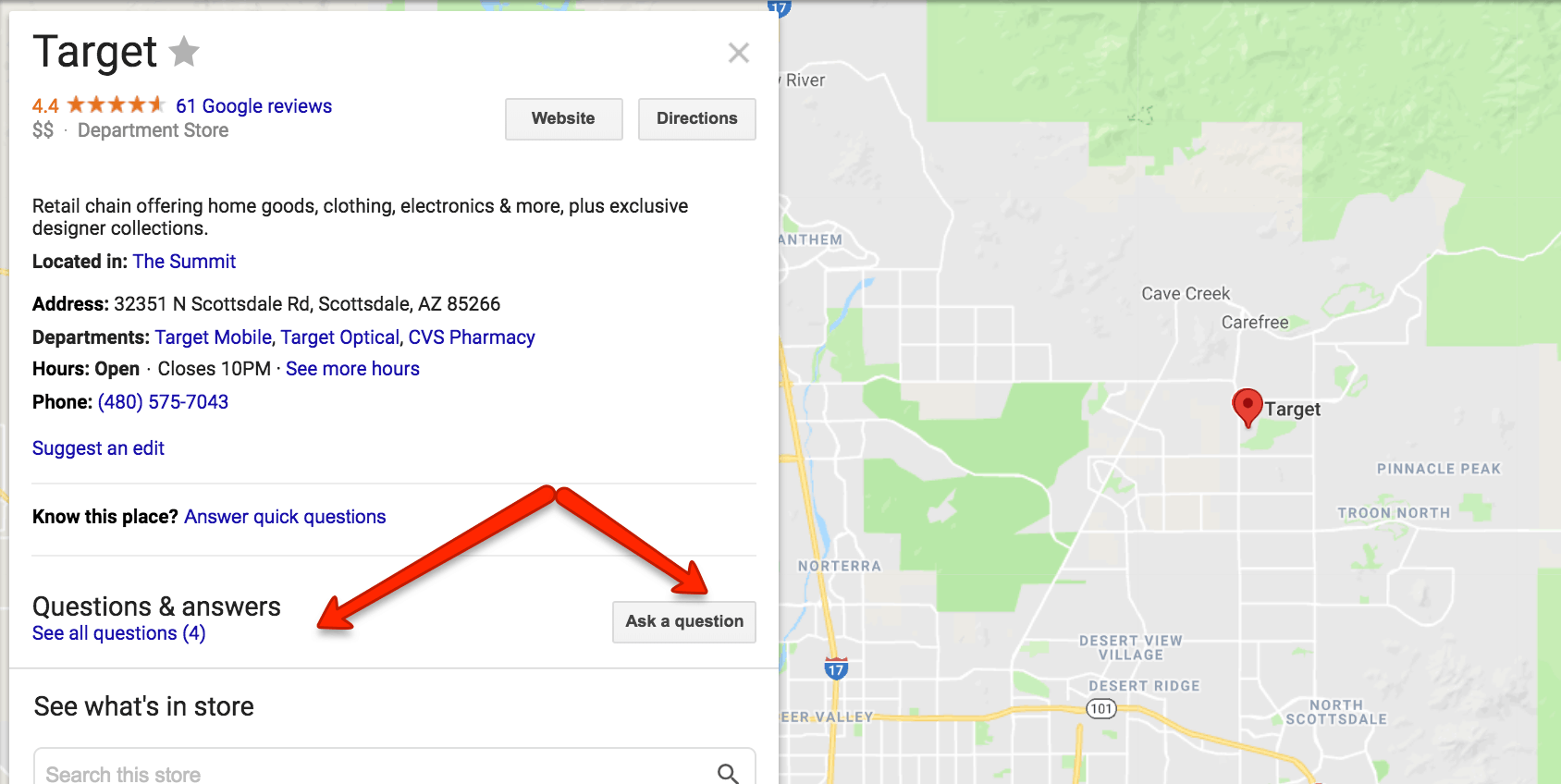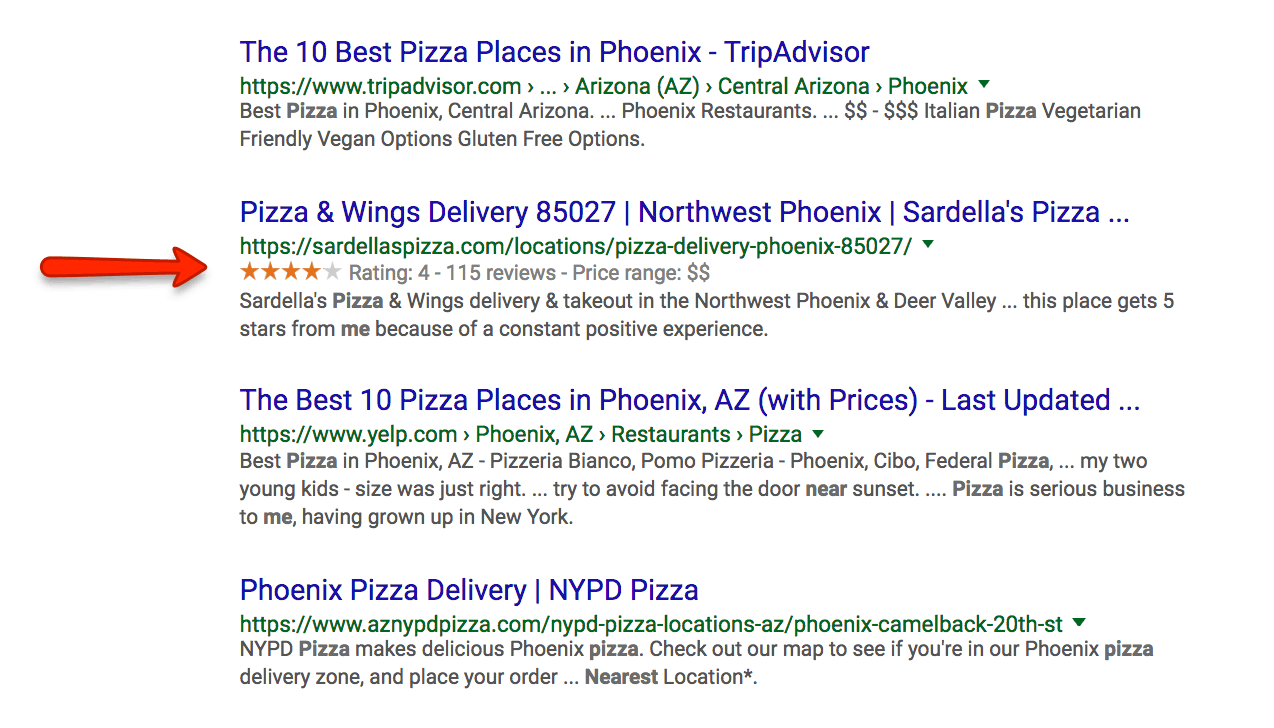But SEO is especially complicated when you have limited time, money, and other resources.
For small businesses, it boils down to one question:
What can we do today to help improve our rankings?
Great organic rankings don’t happen overnight.
However, there are at least 11 things you can focus on to start moving the needle for your small businesses.
The following SEO checklist for small businesses will help you prioritize SEO tasks.
It includes:
- What to address.
- Why it’s important.
- The tools to use.
- The time commitment involved.
1. Nail Down What Problems You Solve For Customers
Before jumping into SEO, you must first understand the nature of what your small business provides to your customers, according to Chris Luttjohann with Digital Current.
For example:
- How, when, and where do customers determine they need your product or service?
- Is it away from home, using their cell phone? Is it at home using a desktop computer or tablet?
- Is it driven by a personal desire, like good food to eat or a great place to spend some time?
- Or is it caused by a disruptive event like a home or personal issue?
These questions color the language your customers will use to find your business.
This information will drive your keyword research and content creation, among other tasks.
Tools to use: Whiteboard
Time involvement: Medium
2. Fix Your Technical SEO Issues
Your small business website might look fine on the outside – with great graphics, colors, and fonts.
But if there are technical problems “under the hood,” it will likely impact your rankings and traffic.
Before embarking on a content or link campaign, spend time fixing the foundation.
You need a solid website structure so search engines can properly crawl and index your webpages.
Some of the most common technical SEO problems have to do with:
- Speed.
- Duplicate content.
- Broken links.
- Improper use of canonical link elements.
- Un-optimized pages.
Tools to use: SEMRush, Google Search Console, GT Metrix, Siteliner and Screaming Frog
Time involvement: High
3. Optimize Your Pages
On-page optimization is more than just putting keywords on the page.
You must develop quality content that is properly structured using natural characteristics for the targeted keywords.
Use every reasonable (i.e., non-spammy) opportunity to add your targeted keywords appropriately on your website.
Otherwise, you’re missing important ranking signals.
In other words, you must optimize your:
- Titles.
- Meta descriptions.
- Body content.
Kevin Chow with Digital Current takes it a step further. When you’re optimizing and building your content, you should think about terms or locale to speak to your audience.
For example, in Washington State you would use “Tri-Cities” instead of Kennewick, Richland, and Pasco.
Tools to use: SEMRush, SpyFu, Google Search Console, Keywords Everywhere
Time involvement: High
4. Optimize Google My Business
Google My Business should be a focal point for any small business. It’s free, easy to update, and can make a big impact.
The first step toward optimizing your Google My Business listing is claiming and verifying it: https://www.google.com/business.
Be sure to fill out as many fields as you can and include photos and videos to enhance your listing.
Your category selection is super important. Be sure to choose the correct categories for your business.
If you want to get more advanced with Google My Business, take the time to create questions and answers.
What does that mean?
In local search results, there is now a section where people can ask questions and get answers.
As a small business, it is important that you stay on top of these questions. Create your own questions and provide the answers.
Here’s how these questions appear in local results:

Tools to use: Google My Business
Time involvement: Low
5. Find Out What Competitors Are Doing & Do It Better
Competitors online might be different than the competitors within your local area.
For SEO purposes, we are the most concerned with the websites that are showing up in the top 5 to 10 positions of Google search results for your targeted keywords. Those are the competitors you want to analyze.
When doing a competitive analysis, use tools to find out:
- What those sites are ranking for.
- How many pages they have indexed.
- Their website structure.
- The quality of their backlink profile.
Also, we know page speed is a factor in Google’s ranking algorithm.
So run their landing pages through page speed tools. Look for areas of weakness.
For example, are their pages running slow? Are there keywords they have missed that you can target?
Tools to use: SEMrush, SpyFu, Majestic
Time involvement: Medium
6. Manage Local Business Listings & Citations
In addition to Google My Business, you need to control the accuracy of your local business data.
Consistency is crucial.
Data aggregators (e.g., Neustar Localeze, Factual) share information about local businesses, including the name, address, and phone number (NAP).
Make sure your business’s NAP information is consistent and accurate. Local business listings and citations (i.e., online mentions of a business) can help improve your local presence.
The best approach to local directories and citations is to sign up for a service that will distribute your business NAP information.
Tools to use: Yext, BrightLocal, WhiteSpark
Time involvement: Low
7. Get Links from Websites in Your Local Area
Most small business owners never think about links.
However, getting links to your site can help improve your rankings.
That can mean more sales and more customers.
My approach to “link attraction” has always been more of a publicity angle:
What can we do to spread the word about our business, educate others, and get involved in the community?
Tools to use: Majestic, Ahrefs, SpyFu
Time involvement: High
8. Add Schema Markup
Schema markup sends search engines signals about page components, such as:
- Business name.
- Address.
- Phone number.
- Ratings.
- Business hours.
This can lead to rich snippets in SERPs.
JSON-LD markup is preferred for SEO. You can see rich snippets in action within the SERP below.

Tools to use: Google Structured Data Testing Tool
Time involvement: Medium
9. Focus on Getting Reviews
Even my kids are conditioned to look up reviews before making a purchase.
Reviews were one of the leading local search ranking factors in 2017, according to Local SEO Guide.
Plus, you can improve your conversions by putting effort into getting reviews and feedback from your customers.
Platforms can help you organize and manage a review campaign.
Or, you can simply encourage customers to leave reviews on the major online review sites.
Tools to use: GetFiveStars.com, Yext
Time involvement: High
10. Create Videos & Images for Competitive Keywords
Websites need content, which means words, so that search engines understand what they are about.
Content goes beyond words, though, and should include images and videos.
In fact, if you are struggling to show up for competitive keywords, why not try a properly optimized video or an image?
This is a point that Google’s Gary Illyes made in the following tweet:

Tools to use: Keywordtool.io, SEMRush, SpyFu
Time involvement: Medium
11. Mix Paid with Organic to Get Going
If you’re just starting out with SEO, it can take a while to see results.
SEO is a great long-term play, but sometimes you need to start generating leads right away. That is where paid search can really help.
While you are building up your SEO work, set aside a budget for paid, so that you can keep the leads coming in.
Even after you have a steady flow of organic traffic to the website, you might still consider running a paid search campaign in conjunction.
Tools to use: Google Auction Insights, Bing Ads Keyword Planner Tool
Time involvement: High
Summary
This list is a consolidated version of what you can tackle to improve your rankings.
Even if the list seems daunting, the important thing is to just do something.
Set goals you know you can accomplish and start working your way down the list.
If you get stuck, there are enough online resources to help point you in the right direction.
________
by Mindy Weinstein
Source: searchenginejournal.com









